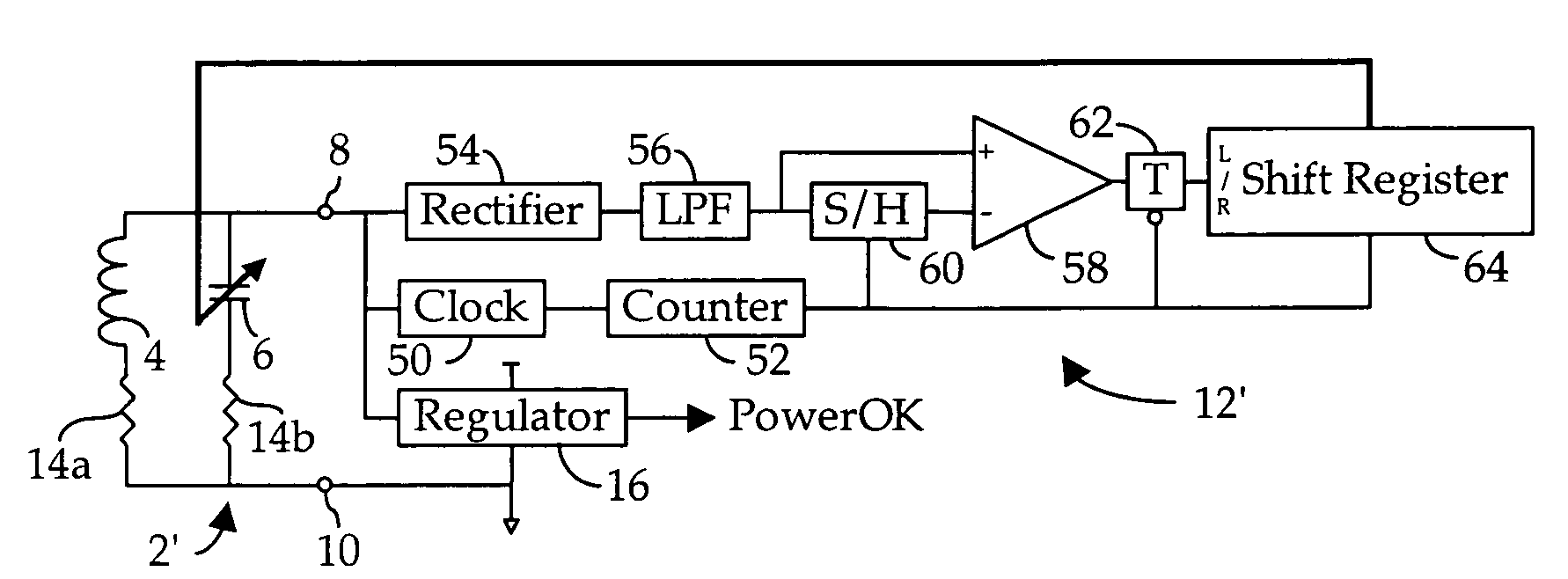Method and apparatus for varying an impedance
a technology of impedance and variable impedance, applied in the field of variable impedance, can solve the problems of critical loss, loss of transmitted power, and inability to solve basic needs, and achieve the effect of improving the response rate of the circuit and easy increasing the rate of recursion
- Summary
- Abstract
- Description
- Claims
- Application Information
AI Technical Summary
Benefits of technology
Problems solved by technology
Method used
Image
Examples
Embodiment Construction
[0051]As shown in the variable tank circuit 2′ in FIG. 2, in many applications, such as RFID tags, it may be economically desirable to substitute for variable inductor 4 a fixed inductor 4′. In addition, one must take into consideration the inherent input resistance, R1, of the load circuit 12, as well as the parasitic resistances 14a of inductor 4′ and 14b of capacitor 6.
[0052]In accordance with the preferred embodiment of my invention as shown in FIG. 3, the amplitude modulated (“AM”) signal broadcast by the reader in an RFID system will be magnetically coupled to a conventional coil antenna comprising inductor 4′, and a portion of the induced current is extracted via nodes 8 and 10 by a regulator 16 to produce operating power for all other circuits. Once sufficient stable power is available, regulator 16 will produce a PowerOK signal to initiate system operation (see, 18 and 20 in FIG. 4). If desired, a variable resistor (not shown) can be provided in parallel with inductor 4′, g...
PUM
 Login to View More
Login to View More Abstract
Description
Claims
Application Information
 Login to View More
Login to View More - R&D
- Intellectual Property
- Life Sciences
- Materials
- Tech Scout
- Unparalleled Data Quality
- Higher Quality Content
- 60% Fewer Hallucinations
Browse by: Latest US Patents, China's latest patents, Technical Efficacy Thesaurus, Application Domain, Technology Topic, Popular Technical Reports.
© 2025 PatSnap. All rights reserved.Legal|Privacy policy|Modern Slavery Act Transparency Statement|Sitemap|About US| Contact US: help@patsnap.com



